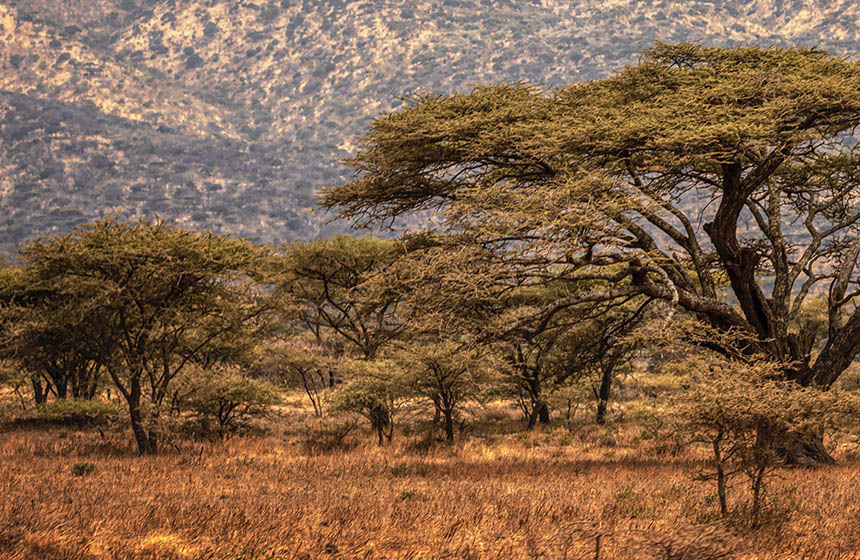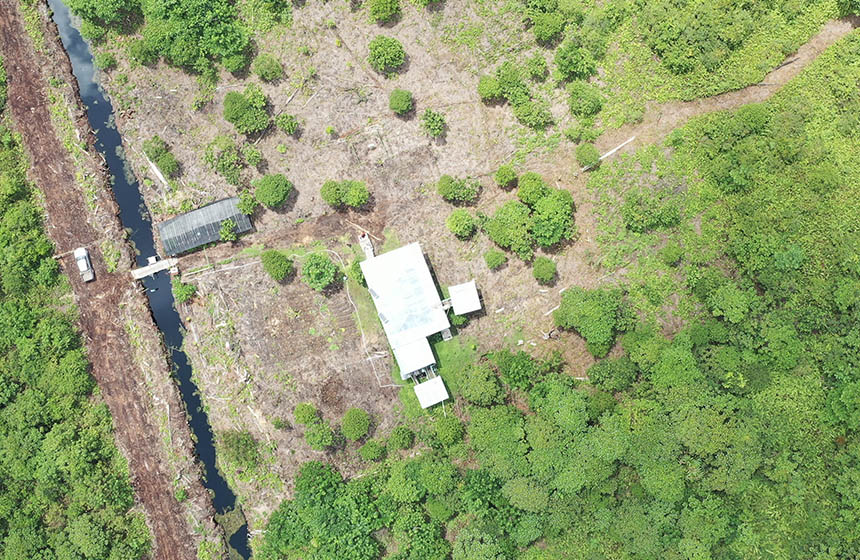Dryland forest protection and carbon credit project through community land use planning
Protection of dryland forest from conversion to grazing land for pastoralist local communities in the Makame Wildlife Management Area with revenues from carbon credits used for community development needs, improving health and educational infrastructure, and supporting locally led project monitoring.
Nature-based Intervention:
Since 2016, Carbon Tanzania has worked with five Maasai communities with approximately 15,000 people located in the Makame WMA, a critical habitat for wildlife in the Tarangire-Manyara ecosystem to protect 364,322 hectares of dryland forests. The project is built on upon securing community land tenure to existing seasonal grazing land and generating income from the sale of certified carbon credits for avoided deforestation. Using a REDD+ project model the intervention is reportedly estimated to provide a cumulative net greenhouse gas reduction of reduction of 1,365,037 tonnes of CO2 between 2016 and 2026. They have used these funds for the creation of an anti-poaching unit, wildlife monitoring, environmental education, governance and management training, natural resource management infrastructure, and women empowerment initiatives.
Overview of context and outcomes:
The Makame WMA is a species rich habitat in the Tarangire-Manyara ecosystem. The WMA is a form of community-based natural resource management where local communities develop and implement a land use plan that can be used to secure community land tenure to existing seasonal grazing land within the WMA and designate areas that can and cannot be used for grazing. Funds generated through the sales of carbon credits for avoided deforestation are used to fund community development needs and employ Village Game Scouts as an anti-poaching unit.
Case effectiveness on
Climate change
The project is estimated to generate an average of 136,504 tonnes of CO2 in avoided emissions annually between 2016 and 2026. It is reported that the project generated about 150,000 tonnes of CO2 emissions avoided between 2016 and 2020, and 130,000 tonnes avoided in 2021 alone.
Ecosystem health
Ecological effect: PositiveAccording to project reports, the project has helped improve habitat quality and extent for four globally critically endangered or endangered species: African Wild Dog (Lycaon pictus), lappet-faced vulture (Torgos tracheliotos), white-backed vulture (Gyps africanus), and Ruppells griffon vulture (Gyps rueppellii). It is also reported that the Village Game Scouts were able to reduce poaching incidents within the WMA by 90 per cent in 2020
Socioeconomic outcomes
The five Maasai communities have reportedly earned over USD 427,475 from carbon revenues generated over the life of the project. From the more than USD 328,915 reportedly earned in carbon revenues in 2021, USD 40,900 was spent on health services, USD 111,600 was spent on education, and approximately 27 Village Game Scouts were employed.
Governance
Village councils and assemblies are designated as the statutory authorities responsible for management of village lands. The Makame WMA Council is the Authorized Association with governance responsibility for the WMA. Members of the Council are democratically selected and the Council is in theory accountable to the five village councils that form the WMA.The Makame WMA Council develops, submits and implements Makame WMA’s Resource Management Zone Plan, which defines what land use activities are permitted, and where. Carbon Tanzania is the proponent for the carbon credit project and assisted in the development of the Resource Management Zone Plan. The project’s targets were identified during a series of community workshops and include aspects related to natural resources as well as to social, cultural, economic or religious aspects of the community. The communities decide democratically in meetings how to spend their share of the carbon credit revenue on community development needs.
Finance
The Makame WMA project is financed by the sale of carbon credits generated from avoided deforestation of forest land expected to be converted to non-forest grazing land and from tourism revenues. By 2023, Makame WMA is projected to bring in USD 265,000 annually from its 30-year contract with Carbon Tanzania to refrain from clearing forests in accordance with the Resource Management Zone Plan. Payments to Makame WMA take the form of Payments for Ecosystem Services and are financed by sales of carbon credits.
Monitoring and evaluation
Community investments in game scouts who patrol and monitor the forest and its wildlife.
Trade-offs and limitations
No information yet available on trade-offs.

Intervention type
- Management
- Protection
Conducted at landscape scale
Ecosystem type
- Tropical & subtropical forests
- Tropical & subtropical grasslands
Climate change impacts addressed
- Biomass cover loss
Instigators
- Community/self driven
- National conservation/environment organisation
Societal challenges
- Biodiversity conservation
- Climate change mitigation
- Conflict and Security
- Economic and Social development
- Rights/empowerment/equality
- Health
Outcomes
- Food security: Not reported
- Water security: Not reported
- Health: Positive
- Local economics: Positive
- Livelihoods/goods/basic needs: Positive
- Energy security: Not reported
- Disaster risk reduction: Not reported
- Rights/empowerment/equality: Positive
- Conflict and security: Not reported
- No. developmental outcomes reported: 6
Resources
Read resource 1Read resource 2
Read resource 3
Literature info
- Grey literature
- Peer reviewed



